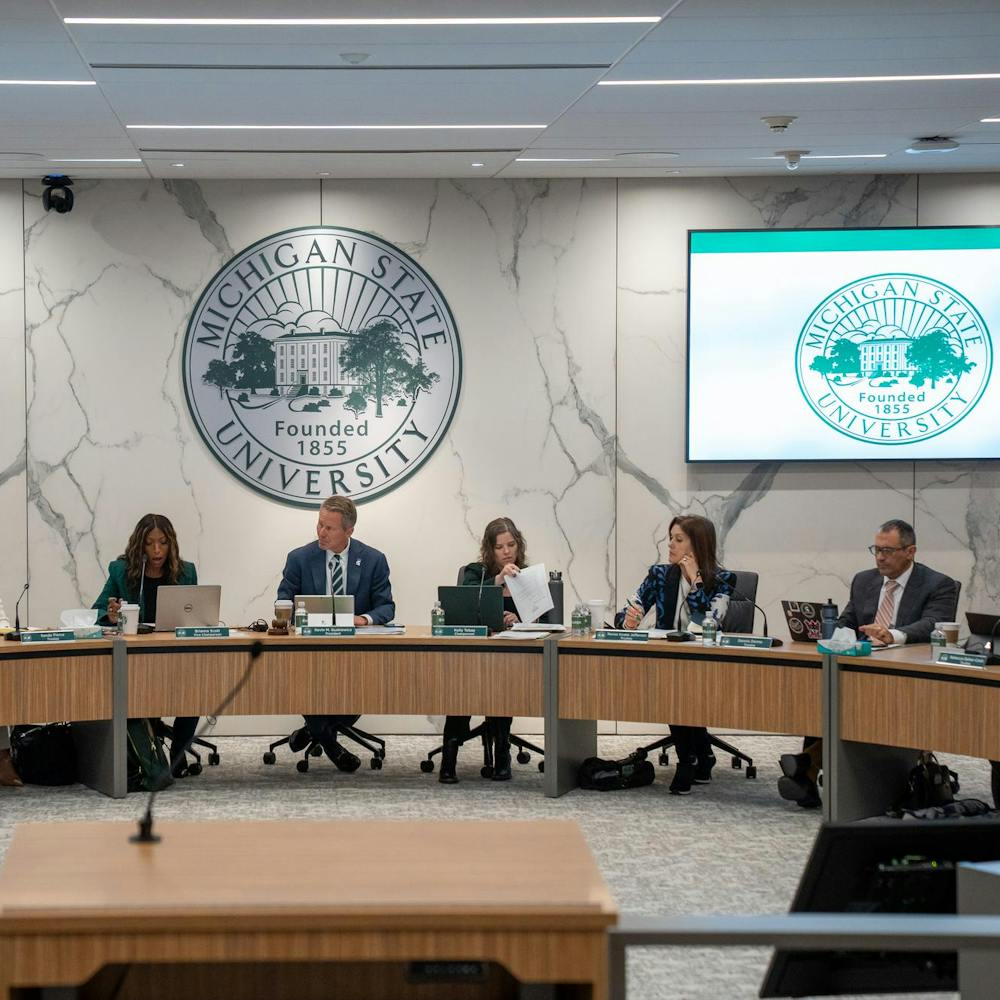With his hands as his only instrument, Benjamen Warren, a master-level Reiki instructor, is able to soothe the discomforts of his clients through the Japanese practice. Warren, who offers classes at the East Lansing Hannah Community Center, 819 Abbot Road, and Wholistic Life Services, 1099 E. Grand River Ave. in Williamston, said trying Reiki is an unforgettable experience everyone should try.
“Reiki is based on the idea of a universal life force of energy that runs constantly throughout the entire human body,” Warren said. “When a person’s energy flow is low or becomes interrupted, people are more likely to get sick, or experience difficult emotional problems.”
Warren, who has been practicing Reiki for four years throughout the Lansing area, said it yields similar results to other forms of alternative healing such as acupuncture. It is commonly used for stress-reduction and relaxation, while promoting healing at the same time, he said.
Understanding the body
Reiki is defined as “spiritually-guided life force energy.”
The practice of Reiki concentrates on seven areas of the body known as chakras, Warren said, corresponding to different organs and nerves within the body.
“Each chakra serves as a major energy center in the body,” Warren said. “When we encounter problems within the mind, body or spirit our chakras become dysfunctional or completely closed, leading to disruptions in our energy flow.”
The first chakra is located at the top of the head and the rest are found in descending order. The forehead, or third-eye chakra, is next, followed by the throat, heart and solar plexus, or stomach chakra. Finally the navel chakra and pelvis, or root, chakra complete the chain.
“Because the seven chakras are connected, when one becomes unbalanced the others can be too,” Warren said.
Reiki is divided by three separate levels, Warren said. The first level concentrates on physical issues of pain or illness, while the second level deals with emotions and negative thought patterns, Warren said. By completing the third, or master level, you are then allowed to practice Reiki on other people.
A master-level instructor uses a technique called “laying of the hands.” However, no contact is made between the instructor and the participant. The instructor places their hands just above the participant’s body focusing on the seven chakras and helping the patient to slowly relax, Warren said.
The processes of Reiki, developed in Japan in the early 1900s, Warren said, is gaining popularity. Warren offers one-on-one Reiki healing classes, but said the average size of his classes range from seven to 10 people.
A different feeling
Cole Smith, an environmental studies and applications senior, was introduced to Reiki through a friend, and first tried the practice about six months ago.
“I went into it with a pretty open mind, knowing very little about it,” Smith said. “I was curious about (Reiki) and I figured I would try and see what it was all about.”
Smith said he felt an indescribable feeling in some of his chakras, but was unable to feel anything in some of the others during the treatment.
“I really felt my third-eye and root chakras,” Smith said. “I experienced a warm tingling feeling, and a sense of pressure even though I was never touched. I could see a lot of white light when my third-eye was being worked on, and felt very relaxed, but vulnerable at the same time.”
Smithsaid it was the cost that has kept him from returning for another treatment.
A half-hour session of Reiki costs $30 at Wholistic Life Services and $55 for a one-hour session.
Ann Judge, a Williamston resident and senior at the University of Michigan, has been involved with Reiki for more than 10 years. Her mother used to teach Reiki classes.
Support student media!
Please consider donating to The State News and help fund the future of journalism.
“For me it’s really nice when I get stressed-out, and need a recharge,” Judg said. “It really cleanses my mind and makes me more aware of my own body.”
Although Judge said she usually does not seek treatment from her mother, she attends Reiki healing classes around the Lansing area about six times a year, or whenever she is feeling stressed.
Healthy combination
Warren, along with Dr. Edward Rosick, a physician of family and community medicine, said it should compliment traditional medicine.
“I don’t want people to think I am saying forget going the doctor all together,” Warren said. “Seeing a medical doctor is a part of the healing process, and practices like Reiki serve to speed that process along … you just need to find what works for you.”
Although Rosick is not trained to perform Reiki on his patients, he said he integrates forms of alternative healing such as acupuncture and herbal medicine, within his medical practice.
“I like to think I have the best of both worlds,” Rosick said. “In certain cases, medicine may be the most helpful to a patient, but I also like to look at things many people don’t know about, (like alternative medicine), that could help their conditions.”
While she has been practicing Reiki, Judge said she has found herself taking less frequent trips to the doctor.
“Since it takes away any blockages within my body, I think that keeps me healthier and away from the doctor,” she said.
After the hour-long treatment, Smith and Judge both said they felt a sense of raw energy and a clear mind that lasted an additional four to five hours.
While experiences vary, Warren said feelings like these are very normal.
“I have never heard anyone say they did not enjoy going to a Reiki class,” Warren said. “Everyone I have worked with can find at least one way Reiki has benefited them.”
Discussion
Share and discuss “A healing balance” on social media.






